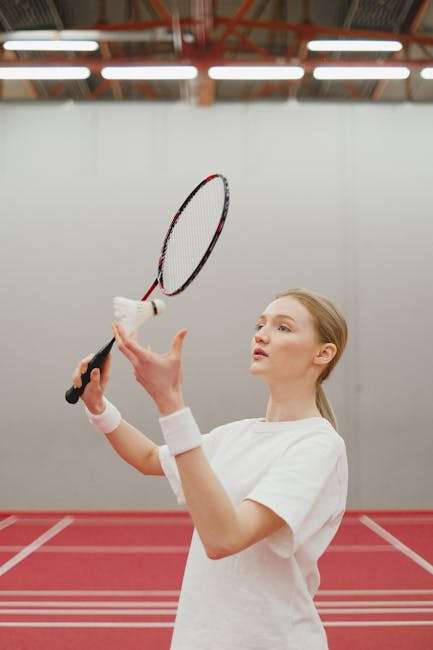How to Recover from Injuries in Shuttle Flash Badminton 🏸
Playing shuttle flash badminton is exhilarating, but like any sport, it comes with the risk of injuries. Whether you’re a seasoned player or just starting out, knowing how to effectively recover from injuries can make a significant difference in your performance and enjoyment of the game. In this guide, we’ll walk you through the essential steps for injury recovery, ensuring you get back on the court as quickly and safely as possible.
Table of Contents
- Understanding Common Badminton Injuries
- Immediate Response to Injuries
- Rehabilitation Strategies
- Prevention Tips for Future Games
- Conclusion
- FAQ
Understanding Common Badminton Injuries 🤕
Before diving into recovery methods, it’s crucial to understand the types of injuries that frequently occur in badminton. Knowing what you’re dealing with can help tailor your recovery process effectively.
Ankle Sprains
One of the most common injuries in badminton is an ankle sprain. This occurs due to the rapid direction changes and quick footwork involved in the game.
Shoulder Pain
Repetitive overhead movements can lead to shoulder pain, often caused by inflammation or strain in the rotator cuff muscles.
Knee Injuries
The constant jumping and lunging can strain the knees, leading to conditions like patellar tendinitis or even more severe ligament injuries.
Immediate Response to Injuries 🚑
Reacting promptly and appropriately to an injury can significantly reduce recovery time. Here’s a step-by-step guide:
R.I.C.E. Method
The Rest, Ice, Compression, and Elevation (R.I.C.E.) method is a tried-and-true approach for managing acute sports injuries.
Rest: Avoid putting weight or stress on the injured area.
Ice: Apply ice packs for 15-20 minutes every hour to reduce swelling.
Compression: Use elastic bandages to wrap the injured area, minimizing swelling.
Elevation: Keep the injured limb elevated above heart level.
Pain Management
Over-the-counter pain relief medications, like ibuprofen, can help manage pain and inflammation. However, consult with a healthcare professional before starting any medication.
Rehabilitation Strategies 🏋️♂️
Once the initial pain and swelling have subsided, it’s time to focus on rehabilitation to regain strength and flexibility.
Physical Therapy
A physical therapist can design a personalized exercise program to enhance recovery. These exercises focus on improving range of motion, strength, and balance.
Gradual Return to Play
Start with low-intensity activities and gradually increase the intensity as your body adapts. Listen to your body and avoid pushing through pain.
Prevention Tips for Future Games 🛡️
While recovering is crucial, preventing future injuries is equally important to ensure you stay on the court longer.
Proper Warm-Up
Begin with dynamic stretches and light cardio to prepare your muscles for the demands of the game.
Use Correct Equipment
Ensure your racket and shoes are suited to your playing style and level, providing the necessary support and comfort.
Strength and Conditioning
Incorporate strength training exercises into your routine to build muscle endurance and enhance joint stability.
Conclusion
Injuries are an inevitable part of playing badminton, but with the right approach to recovery and prevention, you can minimize their impact. By understanding the common injuries, responding promptly, and following a structured rehabilitation program, you’ll be back on the court in no time, ready to enjoy the game you love.
FAQ
How long does it take to recover from an ankle sprain in badminton?
The recovery time for an ankle sprain can vary depending on its severity. Mild sprains may take 2-4 weeks, while more severe sprains could require 6-8 weeks or longer.
Can I play badminton with a shoulder injury?
It’s best to avoid playing with a shoulder injury until you’ve fully recovered. Continuing to play can worsen the injury and prolong recovery time.
What are some effective exercises for preventing knee injuries in badminton?
Strengthening exercises for the quadriceps, hamstrings, and calves, as well as flexibility exercises for the hips and ankles, can help prevent knee injuries.
Is it necessary to see a doctor for every badminton injury?
While minor injuries might be managed at home, it’s advisable to consult a doctor for severe or persistent pain to ensure proper diagnosis and treatment.
Remember, your health and safety are paramount. Always prioritize them over the game, ensuring you can play badminton for many years to come. 🏸💪
